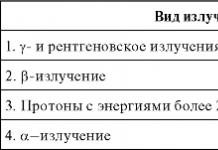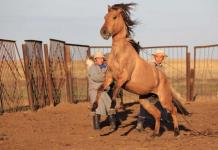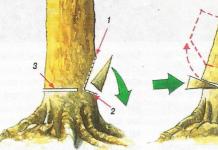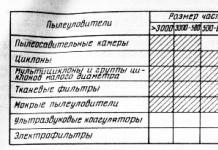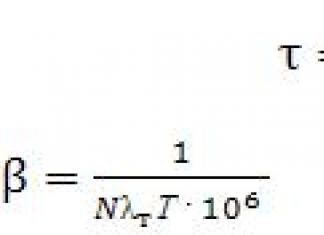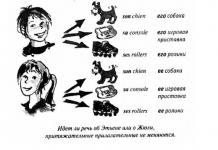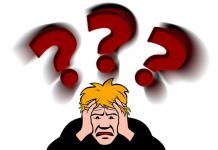Fainting is a short-term loss of consciousness that can happen even with an absolutely healthy person due to heart failure, overheating, severe stress or oxygen starvation of the brain.
First aid for fainting should be provided before the arrival of the medical team on duty, since sometimes the health and even the life of the victim depends on this. Knowing the symptoms and ways to help with such a condition can be very useful, so you definitely should not neglect such important information.
The reasons for this condition
Asking the question of how to provide first aid for fainting, it is necessary to understand that such a problem is not independent, but only represents one of the signs of various disorders or malfunctions in the body. In the event that the fainting state occurred once, it can be attributed to excessive emotional stress or nervous shock. However, if a person loses consciousness quite often, there are definitely reasons for this, among which the following can be distinguished:
- A decrease in the level of blood pressure, provoked by both external factors and a variety of ailments.
- Violation of the full regulation of the cardiovascular system, accompanied by the outflow of blood from the brain. Such a manifestation is often associated with too high physical activity or occurs due to a sharp change in body position.
- As a result of prolonged exposure to the scorching sun, heatstroke can occur, which can lead to fainting. A distinctive feature of fainting is a rapid heartbeat, accompanied by perspiration and redness of the skin.
Other causes that can cause fainting include severe food and alcohol intoxication or poisoning with pharmaceuticals. The collapse can be triggered by a sharp drop in blood sugar levels, which often occurs after a long stay on one of the strict diets or because the diet lacks high-grade carbohydrates. First aid for fainting and loss of consciousness, which were provoked by hunger, should be provided as soon as a person's breathing becomes noticeably quicker and a severe headache begins, accompanied by tremors and a feeling of "cottony" legs.
Symptoms
Just before fainting, most people notice prior symptoms. Therefore, in the event of the following phenomena, it is worth immediately helping the person to take a horizontal position, since fainting in such a position does not occur:
- feeling of numbness in the upper and lower extremities;
- pallor of the skin;
- the appearance of ripples or "flies" in front of the eyes;
- cold sweat accompanied by freezing feet and palms;
- nausea, vomiting;
- ringing, noise, or a feeling of congestion in the ears;
- severe weakness, in which the legs may give way.
Providing first aid for fainting and the above-described signs of an impending fainting state involves not only a clear algorithm of actions, but also a number of certain things that are strongly discouraged.
In particular, a person who loses consciousness should not be harshly shaken and shaken, which is often attempted by incompetent assistants. It is also forbidden to move the patient and forcefully transfer him to a sitting or upright position.
First aid
It will be absolutely useful for every person to know how first aid is provided for fainting, since collapse is a condition that poses a high danger to life. It is characterized by a violation of the blood supply process, a drop in blood pressure and oxygen starvation of the brain.

So, first aid for shock and fainting occurs in the following sequence:
- A person needs to be helped to take a lying position and free him from squeezing elements (loosen the belt, tie, unbutton the collar).
- Next, you need to check your pulse and make a small soft roller of clothing that fits under your head.
- The head is shifted slightly to the side so that the unconscious person does not choke on vomit.
- You need to open the windows to provide oxygen. If the collapse has occurred due to overheating in the sun, the patient must be immediately moved to the shade.
- The patient's lower limbs should be kept in an elevated position, which will provide an additional flow of oxygen to the brain.
What to do if you faint? The victim is wiped on the chest and face with a damp towel or handkerchief. When a person regains consciousness, he needs to be given clean water at room temperature to drink, to which a small amount of honey can be added.
You can also advise him to breathe as often as possible during the first minute after coming to himself in order to saturate the brain tissue with oxygen. After a couple of minutes, breathing should be made measured and deep.
Preventive measures
It is worth knowing not only the rules of first aid for fainting, but also methods of prevention to prevent cases of loss of consciousness.
- First, it is necessary to balance the diet in such a way that it contains a sufficient amount of complete carbohydrates, as well as maintain the required level of hemoglobin. To do this, it is worth eating pomegranate fruits and red beans.
- Secondly, it is recommended to tidy up the daily routine and regularly devote time to walks in the fresh air and moderate physical activity.
Be healthy and don't get sick!
Content
Carefully figure out how to provide first aid for fainting - a sudden loss of consciousness due to a violation of the blood supply to the brain. Fainting lasts up to several minutes. After some time, a person can come to his senses on his own. Fainting is not considered a disease, but only a symptom of heart failure. The victim needs to be kept calm and monitored. Read about the rest of the help below.
What is fainting
Syncope, or fainting, is a short-term loss of consciousness that appears suddenly and is not epileptic in nature. Fainting occurs due to a diffuse decrease in brain metabolism. Metabolic disorders are caused by a short-term decrease in cerebral circulation. It is necessary to be able to distinguish epileptic fainting from normal syncope. These two conditions require a different method of treatment, but in both cases, the person loses balance, falls. First aid should be provided immediately.
Fainting and loss of consciousness - what is the difference
Fainting can be a harbinger of ischemic or hemorrhagic stroke, in which vascular ruptures, acute thrombosis or embolism occur. In this state, loss of consciousness is profound and more prolonged than fainting. Transition into a coma is not excluded. Fainting is not called epilepsy with impaired consciousness, atonic seizures. Seizures occur as a result of a disturbance in the excitation of the cerebral cortex (nerve cells), which causes an imbalance in inhibition and excitation.
The differences between these states are presented in the table:
Signs of fainting
At the first manifestation of symptoms, it is important to be aware of what to do in case of fainting without harming the victim before the doctor arrives. There are 3 stages of fainting, each of which is characterized by its own symptoms:
- light-headedness (presyncopal state);
- syncope phase;
- post-syncope (post-syncopal) phase.
Common signs of fainting in humans:
- dizziness;
- drop in blood pressure;
- sudden weakness;
- cold sweat;
- noise in ears;
- veil or darkening before the eyes;
- nausea;
- rare breath;
- numbness of the limbs;
- insufficient blood circulation;
- rare, shallow breathing.

From what you can lose consciousness
A disorder of the nervous system puts too much stress on the body, which is difficult for the brain center to endure. There is a shock, a sharp decrease in blood pressure, impaired functioning of the brain. Fainting conditions can occur with other disorders in the human body that are difficult to identify. The handbook of the local nurse describes the common causes of the development of a fainting state:
- emotional stress;
- feeling of general weakness (poor nutrition, hunger, prolonged excitement);
- lack of oxygen in the room where the person stays - the oxygen level decreases due to the accumulation of a large number of people in the room, air pollution, poor ventilation system;
- the result of heatstroke;
- long stay in a standing position;
- anemia, arrhythmia;
- bronchial asthma;
- traumatic brain injury;
- severe cough or fever with the flu;
- abdominal trauma;
- blood loss;
- tiredness, overwork;
- pregnancy;
- side effect of taking medication;
- fright;
- adolescence or old age;
- intoxication (with alcohol abuse, infectious origin);
- allergic reaction;
- serious illness.
Algorithm of actions
The first thing to do in the absence of consciousness is to lay the person on his back and feel the pulse. First aid begins with an assessment of the victim's condition. With free airways, a person breathes, and his pulse is rare and weak, blood pressure is reduced. Dealing with fainting that lasts longer than a few minutes requires qualified medical attention.
First aid is carried out in the following sequence:
- Prevent the person from falling, lay on a flat surface and raise their legs for blood flow to the brain. If this is not possible, then sit him down and lower his head below knee level.
- Get rid of the constricting parts of the clothing.
- Wipe the victim's face with cool water or put a wet towel on the forehead to improve cerebral circulation and narrow blood vessels.
- Introduce fresh air into the room.
- In the presence of vomiting, you need to turn your head to one side or put the victim in a safe position in which the person does not choke with vomit.
- After the return of consciousness, bed rest must be observed. Drink hot tea, raising it slightly.
- If a repeated light-headedness occurs again, then the first point should be repeated.

First aid for fainting in children
If the loss of consciousness occurred not in an adult, but in a child, then how to help him? Children develop these conditions for the same reasons as adults. The child's body is weaker, therefore, after each attack, it is necessary to take the child to a neurologist or pediatrician. Short-term loss of consciousness may seem harmless, but behind them are more serious diseases of the blood and nervous system. Help with fainting in children should be provided in the following order:
- The child is put to bed and his legs are raised. This will improve the flow of blood to the brain.
- Remove or loosen parts of clothing that are pressing on the body.
- Provide access to fresh air flow (open the window).
- Pat lightly on the cheeks with a towel soaked in water, spray on the face.
- Breathe in ammonia alcohol - at a distance of at least 15 cm.
- Drink hot tea with sugar to relieve dizziness.
Duration of fainting
The reasons for the loss of consciousness determine the duration of fainting. The usual fainting state lasts from a few seconds to 2-3 minutes. Nuances:
- When a person does not come to his senses for more than 5 minutes, then immediately call the ambulance team - it may be a stroke or epilepsy.
- With a stroke, consciousness may not return for several minutes, hours, or even days.
- After a stroke, a part of the body is paralyzed in a person.
- With an epileptic seizure, a person develops dangerous skin hyperemia or cyanosis, and not just pallor of the skin.
What to do after fainting
To stabilize the functioning of the blood flow in the brain, the victim should lie down for another half hour in a calm state. The state after fainting should return to normal. Bring in fresh air to avoid dizziness. If this is not possible, then gently lift the person. When walking, the patient should be supported, not allowed to be subjected to physical exertion, and sudden movements should be avoided. When such an opportunity presents itself, it is necessary to be examined by a doctor and find out the cause of the ailment that happened.
First aid for fainting - what needs to be done and the algorithm of actions
A well-known phenomenon is fainting, not so harmless and quite common condition. Single fainting episodes, in their essence, are not dangerous for life and can occur against the background of seemingly complete health, due to the prevailing circumstances (excitement, hunger, pain, etc.)
It is much more dangerous if fainting is a symptom of an illness or a nervous breakdown.
Studies in adults have shown that almost every third person has experienced a faint at least once in their life. Fainting is common in blood donors and at the dentist's office.
Each of us should know how to provide first aid to a victim with fainting, as well as know the sequence of actions for fainting, which we will consider in detail in our article. Let's start with the definition:
- This is a short-term (usually within 10-30 seconds) loss of consciousness, in most cases accompanied by a decrease in postural vascular tone. As a rule, this occurs against the background of a decrease in the blood supply to the brain below the level necessary to maintain normal metabolism. At the heart of fainting is transient brain hypoxia, which occurs due to various reasons - a decrease in cardiac output, a violation of the heart rhythm, a reflex decrease in vascular tone, etc.
Forms of acute vascular insufficiency, in addition to fainting, are collapse and shock .
Fainting never comes on suddenly. Most often, it is accompanied by a light-headed state - a sharp pallor, a significant weakening of breathing, a rapid heartbeat, hot flashes, flashing of flies in front of the eyes, a feeling of an impending fall.
Causes
- Dysregulation of the cardiovascular system:
- vasodepressor syncope;
- orthostatic hypotension:
- situational fainting;
- reflex fainting;
- hyperventilation syndrome.
- Mechanical obstruction of blood flow at the level of the heart and large vessels:
- heart rhythm disturbances;
- vascular lesions of the brain.
- Loss of consciousness in other diseases:
- hypoglycemia;
- epilepsy;
- hysteria.
Symptoms
- Sharp pallor of the skin;
- Clammy, cold sweat;
- Cardiopalmus;
- Loss of pain sensitivity.
After losing consciousness:
- Ash-gray skin tone;
- Weak pulse wave;
- Drop in muscle tone;
- Pupil dilation;
- Loss of orientation in space.
Views
Fainting (syncope) states can be conditionally divided into two most common forms (types) of fainting:
- Neurogenic - based on a reflex decrease in postural vascular tone;
- Fainting associated with diseases of the heart and large (great) vessels.
Neurogenic syncope
The most common form of fainting, which is based on a reflex decrease in peripheral vascular tone in response to environmental factors. The development of syncope is preceded by a short period. A few seconds or minutes before losing consciousness, there is a feeling of discomfort, weakness in the legs, nausea, yawning, ringing in the ears, darkening in the eyes. Following this, the person falls or slowly sinks to the floor. Most of these fainting spells are characterized by a quick and complete recovery of consciousness, a satisfactory state of health after an attack.
This group of syncope includes:
- Vasodepressor- more often occurs in young people in response to the action of certain factors - with pain, fear, starvation, emotional stress, the sight of blood, stuffiness, tooth extraction, a sudden message about pleasant or unpleasant things. This is the most common type of syncope and does not pose a serious threat to health and life.
- Orthostatic- occurs when a sharp change in body position from horizontal to vertical. Violation of autonomic neuroregulation plays an important role in the mechanism of occurrence of this condition. With a thorough examination of such patients, doctors note constant complaints of fatigue in the morning, decreased performance, constant headaches and dizziness. Orthostatic fainting can occur during the recovery period after colds, with prolonged bed rest, in the postoperative period, as well as with the wrong intake of certain medications (antipsychotics, antidepressants).
- Vestibular- more often observed in children and adolescents with increased excitability of the vestibular apparatus. Occurs during a boat trip or a long stay on a swing. Fainting occurs suddenly, consciousness is restored rather quickly.
- This group also includes fainting that occurs when hypersensitivity of the carotid sinus, with irritation of the branches of the vagus nerve. At the same time, there is a sharp decrease in the heart rate, a decrease in blood pressure and, as a consequence, a secondary insufficiency of the blood supply to the brain. Such fainting is more common in the elderly, with sharp turns of the head, pressing with a pillow during sleep, while wearing tight collars or ties.
- Situational syncope- can occur with prolonged coughing, defecation, urination, prolonged stay in the mountains, while playing sports, in particular when lifting the barbell.
Fainting associated with diseases of the cardiovascular system
Usually occur suddenly, without precursors.
They fall into two main groups:
- Fainting associated with abnormal heart rhythm and conduction. Episodes of paroxysmal tachycardia deserve special attention.
- Fainting due to decreased cardiac output (aortic stenosis, myocardiopathy, myocardial infarction, dissecting aortic aneurysm).
All of these diseases require treatment in a hospital setting under the supervision of a physician.
Fainting can also develop in severe infectious diseases such as toxic flu, viral hepatitis, acute dysentery, typhoid and typhus.
As we have already said, isolated episodes of fainting, in their essence, are not life-threatening. But there are reasons for alarm if fainting:
- It is a consequence of any disease of the heart and blood vessels;
- Is accompanied by a head injury;
- Repeated regularly and at short intervals;
- It happens in the elderly against the background of complete health;
- It is accompanied by the disappearance of all reflexes of swallowing and breathing.
In most cases, the diagnosis can be made on the basis of a detailed examination of the patient, physical examination and ECG recording. In some cases, position tests are performed, sometimes against the background of drug therapy.
In the presence of heart disease: Holter monitoring, ECG, CT or MRI of the brain, angiography.
First aid
The sequence of actions for fainting:
- Lay the victim in a horizontal position on a flat hard surface on his back (if the position of the body is not natural after fainting);
- Give an elevated position to the lower extremities by placing a pillow, a backpack or simply outerwear twisted into a roller under them (in the absence of these things, ask for help or hold your legs on your own);
- Free the neck and chest from tight clothes by unbuttoning tight collars, top buttons on shirts, blouses;
- Provide an influx of fresh air by opening the vents, doors or take the victim to fresh air;
- Spray the victim's face with cold water;
- Give a sniff of cotton wool with ammonia, rubbing the temples, behind the ear spaces, vigorously rub the earlobes.
- A special massage will also come to the aid of a sick person. Assistance consists in massaging the pads of the fingers on the hands, in massaging certain points. One of them is located under the nasal septum, the other is in the center of the fold under the lower lip.
- After the restoration of consciousness, drink a person with strong sweet tea.
If the patient does not regain consciousness, then it is necessary to exclude traumatic brain injury (if there was a fall) or other causes of temporary loss of consciousness. Call an ambulance.
You should never:
- Sit down immediately after fainting. This can lead to a second fainting episode.
- Leave the person alone and try to run for help. It is better to call an ambulance by phone, and provide the necessary pre-medical measures before the arrival of the doctor.
- Immediately after a fainting episode, give the person any blood pressure medications or other drugs without the appointment of an emergency doctor.
- Letting a person go home alone, unaccompanied, even if the person says he feels great.
- Allow a person to drive a car.
- Hit, slap on the cheeks.
To prevent recurrent attacks with neurogenic fainting, you should give up bad habits, eat balanced, rationally. Physical activity is moderate. You should make a habit of daily walks in the fresh air, at least 1.5-2 hours. Swimming lessons, special exercises on an inclined table, hardening, head and neck massage are recommended. With stressful fainting, emotional stability should be increased, the state of the autonomic nervous system should be normalized. Traditional medicine recommends brewing teas based on the herb mint, lemon balm, valerian. Sometimes sessions of psychotherapy, hypnosis are required.
In patients with symptomatic fainting, therapeutic measures are aimed at treating those diseases that are the causes of fainting, for example, eliminating arrhythmias.
In the literature, you can often find references to how ladies faint from excessive excitement and a chest tightened by a corset. Of course, such items of clothing that impede breathing, as well as overly sensual education, are in the past, but fainting occurs to people to this day. Let's try to figure out what fainting is, what are its causes, symptoms and how to provide first aid.
Causes of loss of consciousnessFainting- This is a short-term (from several seconds to several minutes) loss of consciousness, which can occur for various reasons. Fainting itself is not a disease. Fainting occurs usually due to a violation of the supply of oxygen to the brain.
In medicine, fainting is called syncope (from the Greek word syncope, meaning chopping off), as it cuts the brain off for a short period of time.
There can be many reasons for loss of consciousness, and some of the most common are worth mentioning:
- stress, nervous strain;
- sharp;
- physical exhaustion, hunger;
- overheating of the body;
- lack of oxygen during prolonged stay in a stuffy room;
- jumps in atmospheric pressure (with meteosensitivity).
For the reasons listed above, the case may be limited to providing first aid for fainting. But do not forget - if the cause of the fainting is not exactly known, then it can be caused by:
- blood loss;
- cardiovascular insufficiency;
- a number of acute and chronic diseases;
- traumatic brain injury.
If you have reason to suspect one of these reasons, or if the loss of consciousness continues for more than two minutes, after providing first aid for fainting, you should seek medical help.
Symptoms of loss of consciousness
A significant part of the signs that precede such a condition can be noticed by the person himself, but certain symptoms are observed already after loss of consciousness, from the side.
So a person can have:
- dizziness;
- tinnitus;
- darkening in the eyes;
- feeling of severe weakness;
- nausea, shortness of breath.
At the first sign of light-headedness, it is recommended to lie down, since a person who is sitting or standing, but not lying, may faint.
Probably everyone has a general idea of what fainting is. But this phenomenon can be easily confused with other urgent situations that lead to serious consequences. That is why a person should know the symptoms of this pathological condition and be able to provide first aid for fainting.
The medical name for fainting is syncope, or syncope. Fainting is, in essence, a loss of consciousness that does not last long (no more than a few minutes). This pathology is not independent. Fainting is a symptom of a condition or disease accompanied by brain hypoxia. First aid for loss of consciousness is necessary to restore normal oxygen exchange in the brain tissues.
The causes of fainting and first aid for fainting are interrelated. Therefore, it is necessary to know what causes the loss of consciousness.
What are the causes of this condition?
- Experiencing a severe stressful situation.
- Tight weight loss diets and hunger can lead to loss of consciousness.
- Excessive physical activity.
- Long-term exposure of a person to the sun in hot weather.
- A sharp change in ambient pressure.
- Sudden hypotension (low blood pressure).
- Pregnancy.
- Long stay in a stuffy and cramped room.
- Prolonged and massive blood loss.
- Diseases of the heart and blood vessels, which lead to hypotension and outflow of blood from the brain, which, in turn, leads to hypoxia (oxygen starvation).
- Open and closed head injuries.
- The presence of acute or chronic pathology of internal organs.
The provision of first aid for fainting will depend on the cause. If a person's condition is not associated with any pathology, then you can limit yourself to general measures, which will be discussed below. In case of fainting, which has become a symptom of the disease, hospitalization and a thorough examination of the patient are necessary.

Symptoms
Fainting is a sudden occurrence that cannot be foreseen. However, there are several warning signs. These include:
- severe weakness in the whole body: if a person suddenly felt weak, and his legs began to give way by themselves, then, most likely, loss of consciousness is approaching;
- noise and ringing in the ears, sometimes people note congestion in the ears;
- a person may feel an unpleasant constricting sensation in the epigastric region, nausea is noted;
- the skin becomes cold and sticky from sweat, palms and feet freeze;
- flies or ripples appear in front of the eyes, darkening in the eyes;
- the skin becomes unnaturally pale;
- numbness of the lower and upper extremities.
If a person has these symptoms, then first aid is needed at this stage. This will help prevent loss of consciousness.
If the fainting state has developed, then the initial examination reveals the following symptoms:
- Pallor of the skin and a bluish tint of the lips and nail plates.
- Breathing slows down and becomes shallow.
- The pulse becomes rare and weak, which indicates a sharp drop in blood pressure.
In this case, emergency care for fainting should be provided immediately. It is necessary to provide assistance on the spot, even 1 person can do this. The main thing is to know the sequence of events.

First aid for loss of consciousness
First aid must begin with calling an ambulance. This is necessary because the cause of this condition can be any pathological process that only specialists can determine.
First aid for fainting should be accompanied by differentiation with coma or epileptic seizure:
- Loss of consciousness during fainting lasts no more than five minutes.
- If a person has a coma, then loss of consciousness may be accompanied by a lack of breathing and cardiac activity. This state is not temporary.
- If consciousness is absent for more than five minutes and there are convulsions, discharge from the oral cavity and involuntary discharge of urine, then the person has an epileptic seizure.
How to provide first aid for fainting? There is a certain order of actions:
- If a person who has lost consciousness is outside in hot weather, then it is necessary to lay him on a flat, hard surface in the shade. If this happened indoors, then lay it on the floor.
- Feel the pulse, determine the breath.
- A soft roller should be placed under the victim's head (roll up any clothing or material).
- The head must be turned to one side: this is done so that the person does not choke on vomit if vomiting suddenly begins.
- Provide oxygen access: unbutton tight clothing, open windows and doors in the room.
- Give the lower limbs an elevated position: this will provide oxygen to the brain tissues.
- Rub the whiskey with ammonia (if any). Keep the cotton wool soaked in the solution at a distance of at least 15 centimeters from the nose.
- The victim's clothes can be sprinkled with water, but only in the warm season.
- Wipe the face and chest area with a wet handkerchief.
- The provision of first aid in case of loss of consciousness continues until the arrival of an ambulance in the event that a person does not come to his senses.
- If a person has come to his senses, then he needs to be watered. In the summer, the patient should be given cold tea or water. In the cold, it is worth offering a person a hot drink.

Heat and sunstroke tactics
First aid for fainting and loss of consciousness caused by sun or heat stroke should be carried out urgently. This condition occurs when the body overheats. A person becomes lethargic, feels severe fatigue, headache, dizziness is noted, and only then loss of consciousness occurs.
First aid for fainting in this case should be provided urgently. The main rule is to cool the patient.
- If a person fainted on the street, then it is necessary to transfer him to the shade or a cool room.
- Remove excess clothing if possible.
- Spray with water.
- Put cold on large arteries (carotid, femoral) and heart area.
- Apply ammonia.
- Give the patient a cold drink (tea, water).
Self help
In some cases, a person may feel the approach of fainting. Therefore, in this case, he can provide emergency care for fainting on his own:
- A person should sit down, and it is better to lie down. On the street, it should be a shade (in the warm season) or a bench (in winter and autumn).
- The first minute, breathing should be deep and frequent, then - deep and measured.
- It is necessary to massage the auricles. You can grind and knead them.
- Drink water in hot weather.
- If the condition worsens, you need to seek help from others.
What can aggravate the condition
First aid for fainting should be provided correctly so as not to harm a person. Therefore, it would be superfluous to mention what cannot be done in this case:
- If the loss of consciousness is due to trauma, then in no case should the victim be carried or moved.
- You can not plant or put unconscious: this will further aggravate the condition.
- You can not shake, turn over and jerk a person: in this case, the provision of first aid can be harmful.


